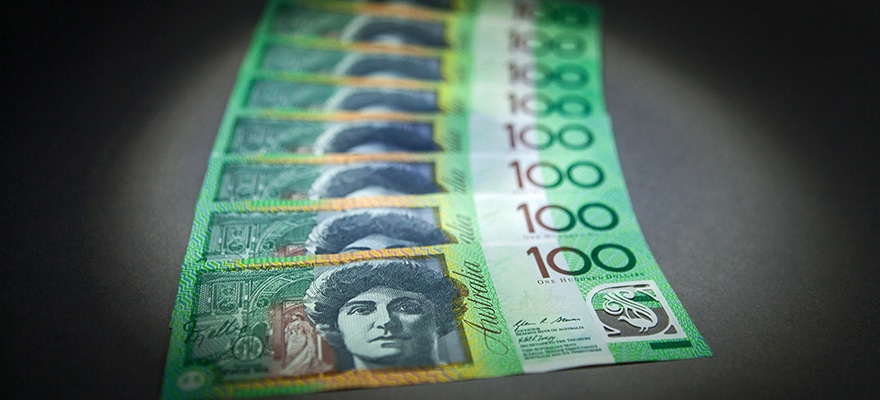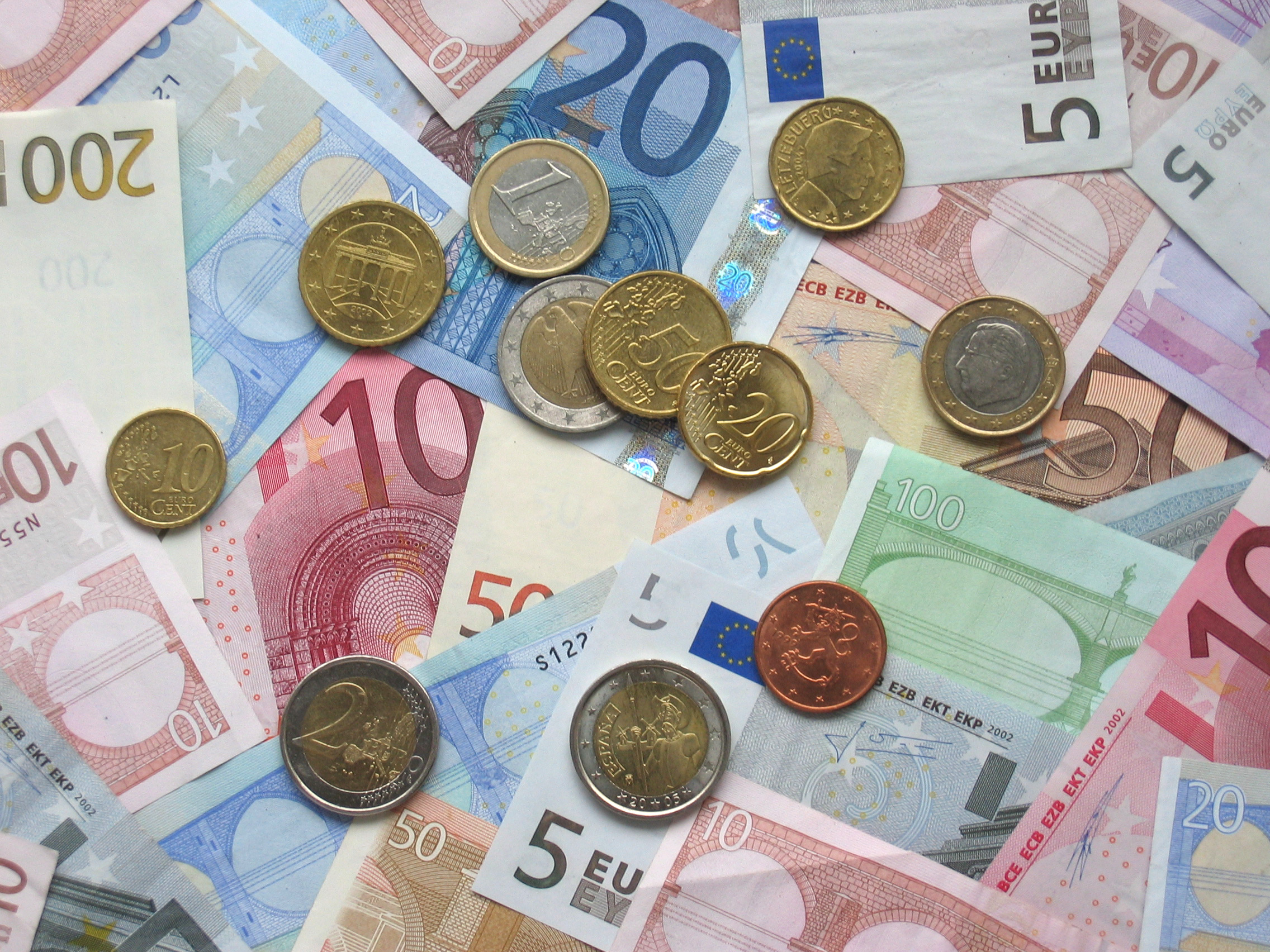This article was written by Idan Levitov. Idan is the VP trading for anyoption.com.
After extensive efforts to revive inflation and the domestic economy outside of the mining and minerals sector, Australian policymakers are expected to continue cutting interest rates after inflation tumbled back into negative territory on a quarterly basis.
The latest data released by the Australian Bureau of Statistics underlines the fact that the outlook for the country remains fraught with downside risks amid slowing Chinese growth and weaker global trade.
Additionally, the latest figures add to growing evidence of another imminent action from the Reserve Bank of Australia to loosen policy as they try and fight deflationary pressures.
The RBA has been extremely accommodative with monetary policy conditions, lowering rates by 50 basis points in 2015 to 2.00%. Consensus now expects another 25 basis point rate cut during next month’s meeting as officials must contend with the risks of over-inflating the housing market and creating other lending bubbles thanks to low rates.
Although RBA Governor Glenn Stevens has long warned that inflation is forecast to remain low for the next two years, few anticipated such as a sharp slide in both the core and headline inflation figures.
Hanging in the balance is also employment which has gradually seen improvement in the jobless rate but failed to see wage growth materialize.
Inflation Plummets
Consumer prices in Australia tested new multi-year lows amid weak demand for raw materials from major trading partners as global trade fundamentals continue to slip.
Based on figures released overnight, annualized headline inflation growth fell to 1.30% from 1.70% in the fourth quarter.
The major drags on the figure came from communication and clothing which fell by -6.40% and -0.80% respectively.
The major drivers to the upside remains alcohol and tobacco prices which rose 6.10% versus the prior quarter and healthcare which rose by 4.60%.
While there remains upside pressure in consumer prices as evidenced by the rise in most categories, inflation remains below the RBA’s target range of 2.00-3.00% and continues to exhibit strong disinflationary pressures.
The momentum lower in the quarterly inflation figure gives credence to the idea that deflation is still encircling major advanced economies across the globe.
Aside from the annualized CPI growing at the slowest pace in four quarters, quarterly inflation fell to the lowest levels since 2008.
This adds to increasing signs that the external environment remains a troublesome development for Australian policymakers as they try and combat the slowdown by emphasizing growth in other areas of the economy.
Hurting the recovery in inflation however has been the rise in the Australian dollar over the last few months, echoing the rebound in commodity prices.
Rates Going Lower
The most visible reaction to the news earlier was rebounding rate cut probabilities, forcing the currency lower amid speculation that the central bank will slash rates even further in the coming months.
Nevertheless, there is still a chance the RBA will hold off from additional accommodation in the upcoming meeting due to speculation that the US Federal Reserve may opt to tighten interest rates by a further 0.25% in the first half of the year.
Such a move would help drive the Australian dollar lower, helping to avert a deflationary spiral and while pressuring inflation back towards the RBA’s targeted range.
One of main drivers of inflation that has been tapering however remains wage growth. Although unemployment has gradually improved over time despite aberrations in the data reported during the fourth quarter of 2015, wage growth has decelerated even further, falling to 0.50% during the same period.
Should the RBA be unable to revive wage growth, it could spell a greater need for monetary policy intervention to drive the figure higher. Wage expansion will be a key driver of spending and price growth going forward, and without it, GDP growth is likely to slow.
Aussie Dollar Slumps
The immediate kneejerk in the Australian dollar was to the downside against peers after the inflation data underscored the host of negative factors weighing on the growth outlook.
The heightened probability of an imminent rate cut in the upcoming May 3rd RBA policy decision saw the AUD/USD pair plunge by over 150 pips, or -1.90% from intraday highs since the headline quarterly CPI figure was released.
Outside of the foreign Exchange
Exchange
An exchange is known as a marketplace that supports the trading of derivatives, commodities, securities, and other financial instruments.Generally, an exchange is accessible through a digital platform or sometimes at a tangible address where investors organize to perform trading. Among the chief responsibilities of an exchange would be to uphold honest and fair-trading practices. These are instrumental in making sure that the distribution of supported security rates on that exchange are effectiv
An exchange is known as a marketplace that supports the trading of derivatives, commodities, securities, and other financial instruments.Generally, an exchange is accessible through a digital platform or sometimes at a tangible address where investors organize to perform trading. Among the chief responsibilities of an exchange would be to uphold honest and fair-trading practices. These are instrumental in making sure that the distribution of supported security rates on that exchange are effectiv
Read this Term developments, the benchmark Australian ASX index fell by -0.63% to 5187.70 during trading as the selloff in the currency extended to stocks.
Should this be a turning point in the Australian dollar, it could spell the resumption of the prevailing longer-term downward trend in the currency, especially if this event marks the end of the correction and pullback.
This article was written by Idan Levitov. Idan is the VP trading for anyoption.com.
After extensive efforts to revive inflation and the domestic economy outside of the mining and minerals sector, Australian policymakers are expected to continue cutting interest rates after inflation tumbled back into negative territory on a quarterly basis.
The latest data released by the Australian Bureau of Statistics underlines the fact that the outlook for the country remains fraught with downside risks amid slowing Chinese growth and weaker global trade.
Additionally, the latest figures add to growing evidence of another imminent action from the Reserve Bank of Australia to loosen policy as they try and fight deflationary pressures.
The RBA has been extremely accommodative with monetary policy conditions, lowering rates by 50 basis points in 2015 to 2.00%. Consensus now expects another 25 basis point rate cut during next month’s meeting as officials must contend with the risks of over-inflating the housing market and creating other lending bubbles thanks to low rates.
Although RBA Governor Glenn Stevens has long warned that inflation is forecast to remain low for the next two years, few anticipated such as a sharp slide in both the core and headline inflation figures.
Hanging in the balance is also employment which has gradually seen improvement in the jobless rate but failed to see wage growth materialize.
Inflation Plummets
Consumer prices in Australia tested new multi-year lows amid weak demand for raw materials from major trading partners as global trade fundamentals continue to slip.
Based on figures released overnight, annualized headline inflation growth fell to 1.30% from 1.70% in the fourth quarter.
The major drags on the figure came from communication and clothing which fell by -6.40% and -0.80% respectively.
The major drivers to the upside remains alcohol and tobacco prices which rose 6.10% versus the prior quarter and healthcare which rose by 4.60%.
While there remains upside pressure in consumer prices as evidenced by the rise in most categories, inflation remains below the RBA’s target range of 2.00-3.00% and continues to exhibit strong disinflationary pressures.
The momentum lower in the quarterly inflation figure gives credence to the idea that deflation is still encircling major advanced economies across the globe.
Aside from the annualized CPI growing at the slowest pace in four quarters, quarterly inflation fell to the lowest levels since 2008.
This adds to increasing signs that the external environment remains a troublesome development for Australian policymakers as they try and combat the slowdown by emphasizing growth in other areas of the economy.
Hurting the recovery in inflation however has been the rise in the Australian dollar over the last few months, echoing the rebound in commodity prices.
Rates Going Lower
The most visible reaction to the news earlier was rebounding rate cut probabilities, forcing the currency lower amid speculation that the central bank will slash rates even further in the coming months.
Nevertheless, there is still a chance the RBA will hold off from additional accommodation in the upcoming meeting due to speculation that the US Federal Reserve may opt to tighten interest rates by a further 0.25% in the first half of the year.
Such a move would help drive the Australian dollar lower, helping to avert a deflationary spiral and while pressuring inflation back towards the RBA’s targeted range.
One of main drivers of inflation that has been tapering however remains wage growth. Although unemployment has gradually improved over time despite aberrations in the data reported during the fourth quarter of 2015, wage growth has decelerated even further, falling to 0.50% during the same period.
Should the RBA be unable to revive wage growth, it could spell a greater need for monetary policy intervention to drive the figure higher. Wage expansion will be a key driver of spending and price growth going forward, and without it, GDP growth is likely to slow.
Aussie Dollar Slumps
The immediate kneejerk in the Australian dollar was to the downside against peers after the inflation data underscored the host of negative factors weighing on the growth outlook.
The heightened probability of an imminent rate cut in the upcoming May 3rd RBA policy decision saw the AUD/USD pair plunge by over 150 pips, or -1.90% from intraday highs since the headline quarterly CPI figure was released.
Outside of the foreign Exchange
Exchange
An exchange is known as a marketplace that supports the trading of derivatives, commodities, securities, and other financial instruments.Generally, an exchange is accessible through a digital platform or sometimes at a tangible address where investors organize to perform trading. Among the chief responsibilities of an exchange would be to uphold honest and fair-trading practices. These are instrumental in making sure that the distribution of supported security rates on that exchange are effectiv
An exchange is known as a marketplace that supports the trading of derivatives, commodities, securities, and other financial instruments.Generally, an exchange is accessible through a digital platform or sometimes at a tangible address where investors organize to perform trading. Among the chief responsibilities of an exchange would be to uphold honest and fair-trading practices. These are instrumental in making sure that the distribution of supported security rates on that exchange are effectiv
Read this Term developments, the benchmark Australian ASX index fell by -0.63% to 5187.70 during trading as the selloff in the currency extended to stocks.
Should this be a turning point in the Australian dollar, it could spell the resumption of the prevailing longer-term downward trend in the currency, especially if this event marks the end of the correction and pullback.






















